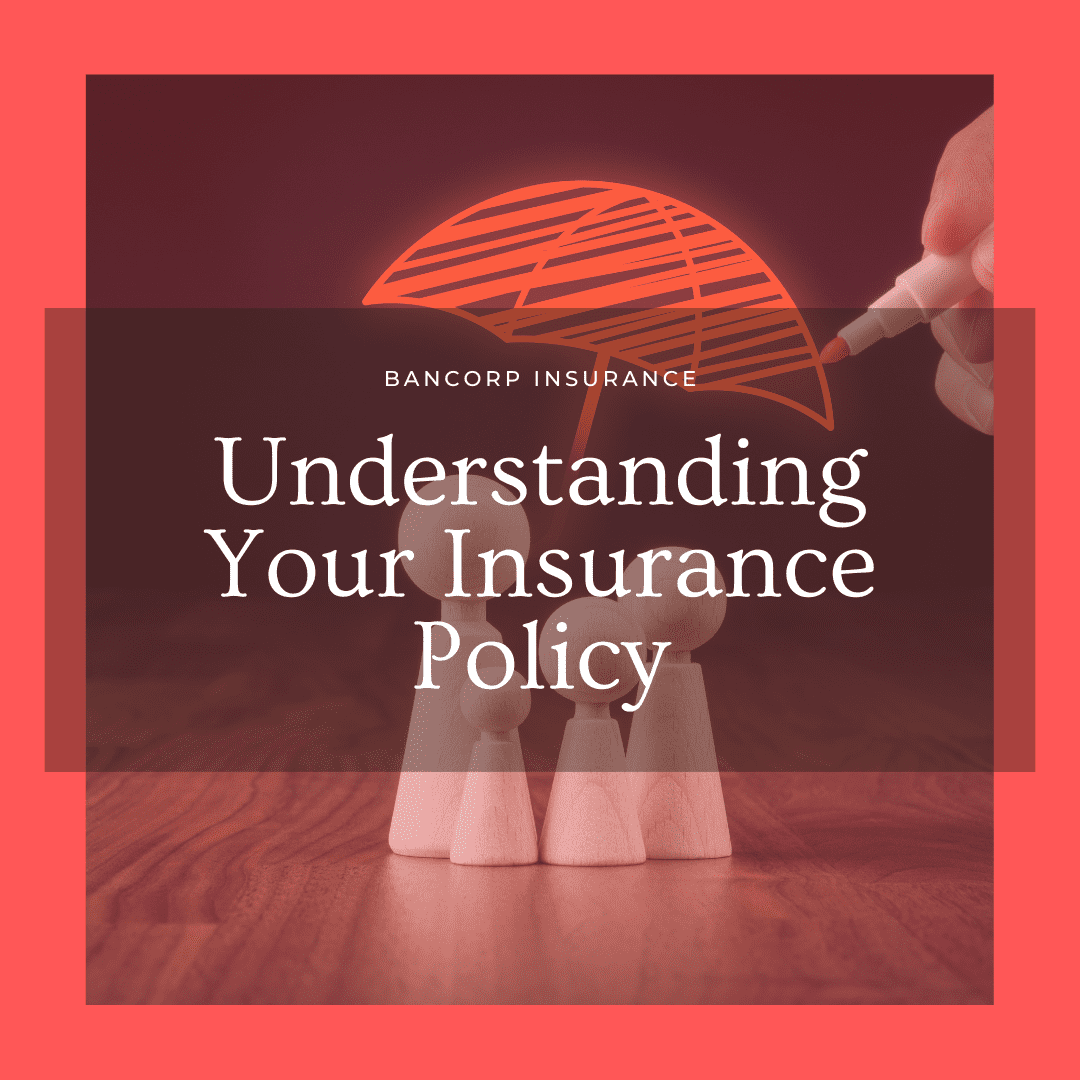Understanding Your Insurance Policy

An insurance policy is a legal contract between the insurance company and the person, business or entity. Understanding your insurance policy is key to ensuring that you have the correct protection in the event of a loss. These legal contracts are understandably difficult to read, because they are developed by lawyers and meant to be legally binding. They are very specific in verbiage pertaining to coverage and limits.
When you choose to work with Bancorp Insurance, your dedicated agent team will ask you a series of questions based on your unique business or personal situation and help to find a policy to fit your budget and needs. They can also help explain the policy and why you need the coverage that is being recommended.
While insurance policies can vary in terms of coverage and limits, each policy has similar basic parts, those are:
The AgreementExclusionsDeclaration PageTerms and Conditions
The Agreement
The agreement is the best place to start with understanding your insurance policy. It is going to contain a high-level overview of what is covered by the insurance agreement, including who qualifies as an insured, the basic coverage areas and limits of the policy, and the term.
Who qualifies as an insured?
The insured is the business or person(s) covered under the insurance policy. A commercial policy can contain multiple levels of insureds including the named insured, the extended insureds, automatic insureds and additional – by endorsement – insureds. Be sure to verify for your specific type of insurance that your policy notes all of the applicable insureds that could be involved in an accident or event. Understanding your insurance policy coverage listing the proper amount of insureds can save you from a claim not being covered in the event of a loss.
What are the basic coverage areas and limits?
The basic coverages and limits listed in the agreement will vary slightly from a personal or business policy. For example, a personal home or auto policy would note the liability and comprehensive coverage limits along with any additional dwelling or personal effects coverage. The limits would also include the coverage area and term of coverage.
A commercial policy would note limits amounts of the policy by occurrence, aggregate limits, business auto, inland marine, tools and equipment, additional coverages for rented or owned premises, medical expenses and any personal or advertising injury limits. Depending on the scope of the business there could be many more basic limits listed in the agreement.
The Exclusions
This section will list any coverages that are not a part of the insurance policy. These exlusions are generally broken down into three categories:
Excluded perils or causes of lossExcluded named types of lossesExcluded property
Again, these exclusions are very specific to the type of insurance coverage the policy is protecting. Understanding your insurance policy exclusions can help you be aware of holes in your coverage and obtain the proper coverage before it happens.
A personal home policy will typically exclude coverage for flood, earthquake or hurricanes. To obtain coverage these certain events, you would need to obtain additional specific coverage. Another example of a typical exclusion for personal auto would be wear and tear. Meaning, if your tires get bald, your battery goes dead, you have a light stop working, etc you cannot file a claim on your insurance to replace them.
For a commercial policy, you will typically see exclusions for business auto, dwellings or home offices, or tools and equipment. Some of these coverages can be added to or on an additional policy to provide specific coverages for your unique business.
The Declaration Page
The declarations section will include additional forms, endorsements or riders. These are most commonly found in commercial policies where there are additional, deleted or revised coverages to the original insurance policy. It is important to double check that any additional documents in the declaration section match the names of the insured and limits listed in the main agreement.
Terms and Conditions
Terms and Conditions are provisions inserted in the policy that qualify or place limits on the carriers promise to pay or perform. If the policy conditions are not met, the carrier can deny a claim in the event of a loss. Common conditions include the requirement to provide proof of loss with the company, to protect property after a loss, and to cooperate during the company’s investigation or defense of a liability lawsuit.
Additional Sections in an Insurance Agreement
Most insurance contracts have a section for definitions, which define specific terms used in the insurance policy. Because these contracts were developed by lawyers, this section is particularly important for you to understanding your insurance policy.
What a Policy Review?
Understanding your insurance policy can be challenging. To obtain a copy of your insurance policy or to request a review of your coverages, contact your insurance agent at Bancorp Insurance. New customers are always welcome. Book an appointment with an agent here.
Bancorp’s insurance experts are available to provide you with a free review and consultation. Contact Us – Bancorp Insurance Call 800-452-6826
Disclaimer: This content is provided for general information purposes and is not intended to be used in place of consultation with our agents.



